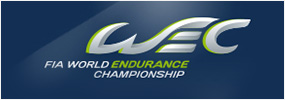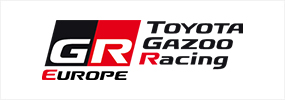ABOUT FIA WORLD ENDURANCE CHAMPIONSHIP.
WEC is the pinnacle of automobile endurance racing.
The FIA World Endurance Championship (WEC) is a world championship of endurance racing competed by both prototype cars and GT cars running together. It is organized under the auspices of and regulations, etc., set by the Federation Internationale de l'Automobile (English: International Automobile Federation), or FIA, with close involvement of France's Automobile Club de l'Ouest (English: Automobile Club of the West), or ACO, which organizes the 24 Hours of Le Mans. According to the regulation, all races must be at least six hours long, and the longest is the 24 Hours of Le Mans.
Current WEC was launched in 2012, and this year’s series of is Season 10. However, the long history of world championship endurance racing that traces back to the first championship held in 1953. That year the championship consisted of seven races, including the 12 Hours of Sebring, the Mille Miglia, the 24 Heures de Francorchamps (24 Hours of Spa) and the 24 Hours of Le Mans. In Japan as well, a WEC round has been held at Fuji International Speedway from 1982 to 1988, at Suzuka Circuit from 1989 to 1992 and also at Autopolis in 1991. From 2012, one round has been held annually at Fuji Speedway (In both 2020 and 2021, WEC Fuji was cancelled due to the COVID-19 pandemic).
World Titles
WEC is competed in the Prototype Class and GT Class and the competitors compete for two titles in each of these classes, making for a total of four class titles. From 2022, trophies will also be awarded in the LMP2 and LMGTE Am categories to bring the number of trophies to six. Series points will also vary by round depending on the race distance.
FIA WEC Drivers Champion (Hypercar class)
FIA WEC Manufacturer Champion (Hypercar class)
FIA WEC Drivers Champion (LMGTE class)
FIA WEC Manufacturer Champion (LMGTE class)
Up to three drivers are allowed to drive one car in a given race. The FIA driver certification is divided into four levels dependent on driver race records, namely Platinum, Gold, Silver and Bronze. The combinations of driver class allowed differs by category.
CATEGORY
WEC is competed in four classes, Hypercar, LMP2, LMGTE Pro and LMGTE Am. The premier class is the Hypercar class, and TOYOTA GAZOO Racing enters GR010 HYBRID in this class. In addition to Le Mans Hypercar specification cars, non-hybrid LMP1 cars were also able to compete with performance adjustment requirements in 2021 and 2022, and in 2022 LMDh (Le Mans Daytona h) specification cars are also allowed to compete.
The LMGTE Pro class is where GT cars compete for the title of No. 1 in the world in endurance racing. There are also the LMP2 and LMGTE Am classes with special provisions aimed at making it easier for privateer to enter and compete.
Hypercar

This is the premier class of WEC. It is open to cars that comply with the Le Mans Hypercar technical regulation set by FIA and ACO, and they can be prototype cars with “Hypercar” type exterior styling designed by the automobile makers to represent their corporate images, or they can adopt the same basic styling of the makers’ public road-legal Hypercar models modified to the required race regulations. The average lap to be achieved in the final of the 24 hours of Le Mans is set at 3 minutes and 30 seconds. Under the regulation, the cars must have a closed body with the overall length of no more than 5,000 mm, the overall width of no more than 2,000 mm and the height of over 1,150 mm from the reference surface, while the machine weight must be no less than 1,030 kg. There are no limits set on engine displacement or number of cylinders, and hybrid systems are also permitted. The tires to be used are limited to those of the sole supplier, Michelin. Balance of performance (BoP) mechanisms will be adopted by all cars. The color of a number panel has to be red. There is basically no restriction on the make-up of driver teams, but no Bronze class drivers can compete.

Le Mans Prototype 2(LMP2)

This is the prototype category for privateer teams operating independently from the chassis constructors and engine suppliers. There is a cap on the size of budget allowed for the teams and they must use chassis that are constructed with a cap on cost decided by Dallara and the rest of the four designated constructors. As for the engine, only one make by Gibson Technology can be used, which is a 4.2-liter, V8, naturally aspirated engine. The cars must have a closed body with the overall length capped at 4,750 mm, the overall width at no less than 1,800 mm and no wider than 1,900 mm, and the overall height must be no less than 1,050 mm, while the machine weight must be no less than 930 kg. The fuel tank must hold no more than 75 liters. The make-up of driver teams must include one Silver or Bronze class driver. The color of a number panel has to be blue. Currently, this is the class with the largest number of WEC entries.

Le Mans Grand Touring Endurance Pro(LM GTE Pro)

This is the GT category for professional teams competing for the world title with works machines of automobile manufacturers. However, a manufacturer can only enter two cars on a full-season basis. Balance of performance (BoP) regulations are adopted for this category, with a prescribed system by which the minimum machine weight is decided based on performance evaluation test results. Specifications for the cars' fuel tank capacity, a rear wing height, an air restrictor, turbo boost pressure, etc., are also subjected to BoP regulations. Four-wheel drive is prohibited. Traction control systems are permitted, and brake discs must be made of steel-based alloys. The engines are based on ones mounted in a mass-production model by the same maker, of which a minimum of 300 units must be produced by the maker to qualify as mass-production. The engines must be naturally aspirated and have a displacement of no more than 5.5 liters, and supercharged engines are restricted to a displacement of no more than 4 liters. A number panel is in green. And as with the Hypercar class, there are no restrictions on the make-up of driver class combinations.

Le Mans Grand Touring Endurance Am(LM GTE Am)

This is the category for amateur drivers in which the cars and other basics used are basically the same as in the LMGTE Pro category. However, in the Am class the cars are limited to those of the previous year, or cars strictly following the regulations from the previous year. A number panel is in orange. The driver combination for each car must include at least one Bronze class driver, and one more Bronze or Silver driver.

Main Regulations
All teams competing in WEC must use the fuel supplied by the organizers, and from 2022, the fuel to be used is the 100% renewable fuel Excellium Racing 100 produced by TotalEnergies. This fuel is capable of reducing emissions of greenhouse gases (GHG) by at least 65% compared to conventional fossil fuels.
Cars competing in the Hypercar and LMP2 classes are each limited to the use of one make of tires, which are supplied solely by Michelin and Goodyear respectively. The number of tires usable by one car in one race are as shown below. There are no limits on the use of rain tires.
| Free practice | QUALIFYING + RACE | ||
|---|---|---|---|
| 6 HOURS | 8 HOURS | ||
| LMH | 12 | 18 | 26 |
| LMP1-nH | 12 | 18 | 26 |
| LMP2 | 12 | 18 | 26 |
| LMGTE Pro | 12 | 18 | 26 |
| LMGTE Am | 16 | 26 | 34 |
*The 24 Hours of Le Mans race has a special regulation concerning tires used
RACES
-
 USA
USA
Rd.1
1000 MILES OF SEBRING -
 BELGIUM
BELGIUM
Rd.2
TOTAL ENERGIES 6 HOURS OF SPA-FRANCORCHAMPS -
 FRANCE
FRANCE
Rd.3
24 HOURS OF LE MANS -
 ITALY
ITALY
Rd.4
6 HOURS OF MONZA -
 JAPAN
JAPAN
Rd.5
6 HOURS OF FUJI -
 BAHRAIN
BAHRAIN
Rd.6
8 HOURS OF BAHRAINS
TOYOTA GAZOO RACING GLOBAL
WRC GLOBAL
WEC GLOBAL
CUSTOMER Racing





